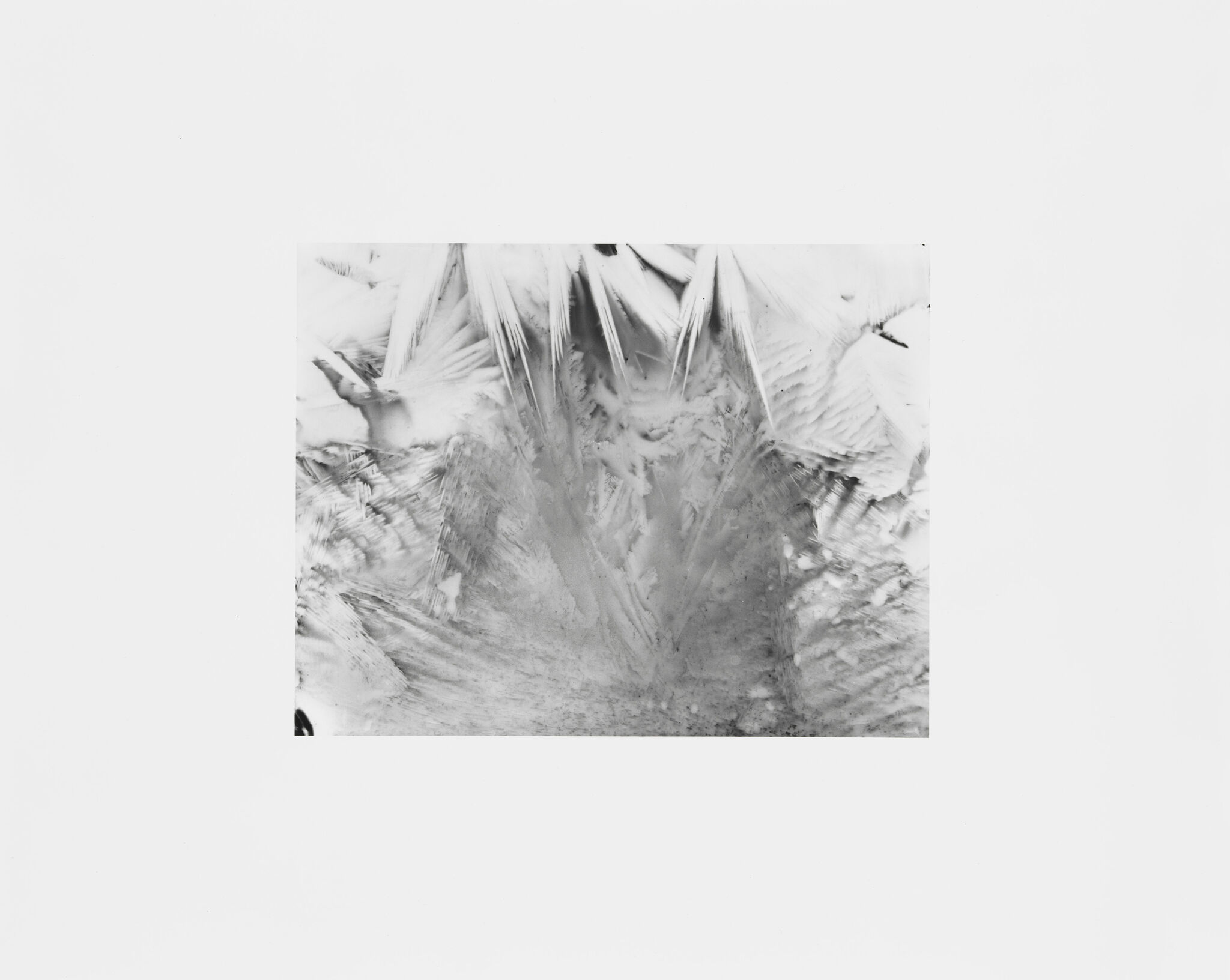Time Management Techniques | Art & Artists
Sept 24, 2022–Jan 8, 2023
Time Management Techniques | Art & Artists
Katherine Hubbard
7
Katherine Hubbard fashioned ten identical plastic boxes, each designed to accommodate a sheet of 4 x 5-inch film. At the base of each box, she cast a cement support that held the film at increasingly steep angles, from zero to ninety degrees. After positioning the film in each box, Hubbard filled the containers with water she collected from New York Harbor and, using a large freezer in her studio darkroom, froze the water, encasing the film in a block of ice. Once the ice had formed, she exposed each sheet of film using the light from an enlarger. Hubbard then left the ice to thaw, which took up to an entire day to completely melt and reveal the exposed film. After the film dried, she sent it to a lab for processing into negatives that she used to create the final prints.










